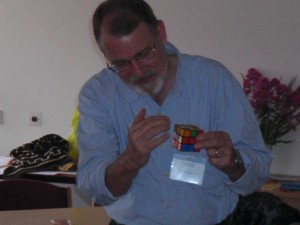Background to the powercube
 The powercube approach has grown through the work of a number of people. What we call here the ‘forms of power’ builds on work by Steven Lukes in Power: A Radical View, originally published in 1974, with a revised edition in 2005. A student of Steven Lukes, John Gaventa applied his work in his book Power and Powerlessness: Quiescence and Rebellion in an Appalachian Valley published in 1980. What Lukes and Gaventa referred to as the three faces or dimensions of power, were also adapted by colleagues at Just Associates into the concepts of visible, hidden and invisible forms of power (see New Weave of Power Politics and People by Lisa VeneKlasen and Valerie Miller, 2002).
The powercube approach has grown through the work of a number of people. What we call here the ‘forms of power’ builds on work by Steven Lukes in Power: A Radical View, originally published in 1974, with a revised edition in 2005. A student of Steven Lukes, John Gaventa applied his work in his book Power and Powerlessness: Quiescence and Rebellion in an Appalachian Valley published in 1980. What Lukes and Gaventa referred to as the three faces or dimensions of power, were also adapted by colleagues at Just Associates into the concepts of visible, hidden and invisible forms of power (see New Weave of Power Politics and People by Lisa VeneKlasen and Valerie Miller, 2002).
The spaces dimension of the cube also had multiple roots, growing from work by John Gaventa, Andrea Cornwall, Rosemary McGee and Karen Brock on understanding differing arenas for participation on poverty issues in Nigeria and Uganda. For more information see Power, Knowledge and Political Spaces in the Framing of Poverty Policy and Unpacking Policy: Knowledge, Actors and Spaces in Poverty Reduction in Uganda and Nigeria. Andrea Cornwall also further elaborated the concept of spaces of participation in a working paper called Making Spaces, Changing Places, for the emerging work of the Development Research Centre on Citizenship, Participation and Accountability (known as the Citizenship DRC). The powercube itself was first used by John Gaventa at a meeting of Citizenship DRC researchers in 2002 and as a training tool with donors on the rights-based approach at the Institute of Devleopment Studies (IDS) in 2003. For more information read the Rights and Power Workshop Report by Alexander Hughes, Joanna Wheeler, Rosalind Eyben and Patta Scott-Villiers.
The powercube has spread and improved in a variety of ways since that time. The idea was picked up and adapted more systematically in a major evaluation for Dutch donors, on ‘Assessing Civil Society Participation’, coordinated by Irene Guijt. In addition, Irene Guijt, Jethro Pettit and John Gaventa also began to use the approach as a training and assessment tool with other NGOs and donor agencies, and students at IDS. Since then, the approach has continued to spread and be adapted by others. This website attempts to share the lessons learned from people who have been using this approach in different ways and different settings.
References for further reading
Brock, Karen., Gaventa, John., and Cornwall, Andrea. (2001) ‘Power, knowledge and political spaces in the framing of poverty policy’, IDS Working Paper 143, Institute of Develoment Studies, Brighton.
Brock, Karen., McGee, Rosemary., and Gaventa, John. (2004) Unpacking Policy: Knowledge, Actors and Spaces in Poverty Reduction in Uganda and Nigeria, Fountain Publisher, Kampala, Uganda.
Cornwall, Andrea (2002) ‘Making spaces, changing places: situating participation in development’, IDS Working Paper 170, Institute of Development Studies, Brighton.
Gaventa, John (1980) ‘Power and Powerlesness’ (chapter 1, sectin 1.3) in Power and Powerlessness: Quiescence and Rebellion in an Appalachian Valle, University of Illinois Press.
Hughes, Alexander., Wheeler, Joanna., Eyben, Rosalind. and Scott-Villiers, Patta. (2003) ‘Rights and power workshop report’, Development Research Centre on Citizenship, Accountability and Participation, Rights and Power Workshop, 17—20 November 2003, Institute of Development Studies, Brighton.
Lukes, Stephen (1974) Power: A Radical View, London, Mcmillan (reprinted 2005, Basingstoke, Palgrave Mcmillan).
VeneKlasen, Lisa and Miller, Valerie (2002) A New Weave of Power, People and Politics: The Action Guide for Advocacy and Citizen Participation, Oklahoma City, World Neighbors.

